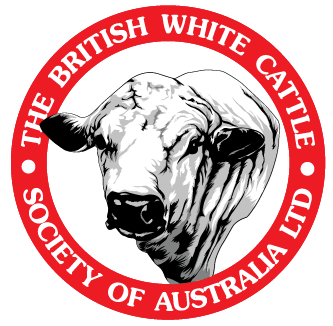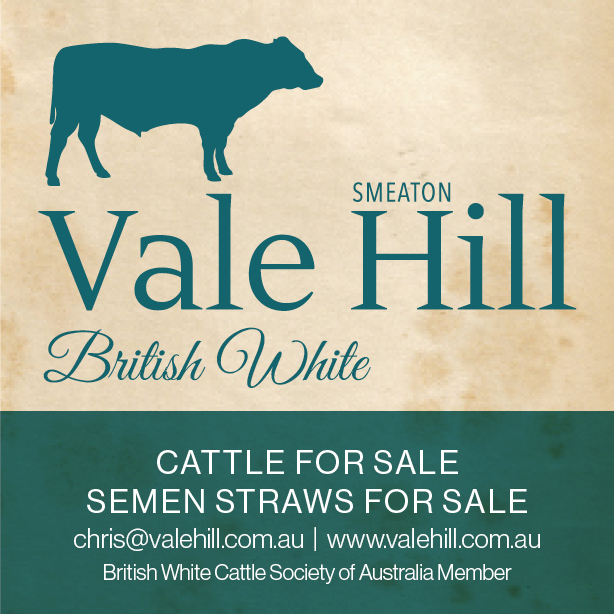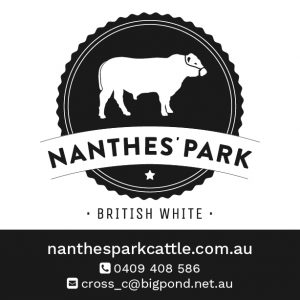1:29 Robertsonian Translocation, a Genetic Defect of Cattle.
By Dr Ian Holmes, Ravenswood British White Cattle Stud, Benalla, Australia: 1 March 2019.
Robertson discovered a chromosomal rearrangement where two normal V-shaped chromosomes fuse at their centromeres to yield a single X-shaped chromosome. This rearrangement is now known as a Robertsonian Translocation (abbreviated here as RT). RT is found in many cattle breeds worldwide particularly the European breeds but in most British breeds it is rare. In some breeds it occurs at a very high frequency, and one of the highest frequencies reported are in the British White cattle.
In a normal karyotype (chromosome set) of cattle there are 60 chromosomes, 29 pairs of non-sex chromosomes plus the sex chromosomes which differ between the sexes; the males having XY and the females having XX. Robertsonian Translocations can be:
heterozygous (where one pair of chromosomes has fused leaving an apparent total of 59 chromosomes),
homozygous (where two pairs of the chromosomes have fused yielding a total of 58 chromosomes), or
normal (RT free; having no fused chromosomes = 60 chromosomes).
In a cattle cell each chromosome can be identified and the non-sex chromosomes are numbered in size order from 1 to 29. The chromosomes that combine in this particular defect are the largest and smallest ones, numbered 1 and 29; hence it is called a 1:29 Robertsonian Translocation.
Dividing a cell which has 59 chromosomes “in half” during meiosis (which produces sperm or eggs) will not work well. Instead of 30 chromosomes in every sperm or ovum, half will get only 29.
The diagram below shows the various products of conception possible when one parent is a 59 (shown as the cow in this example). Note the fatal outcome for half of the embryos.
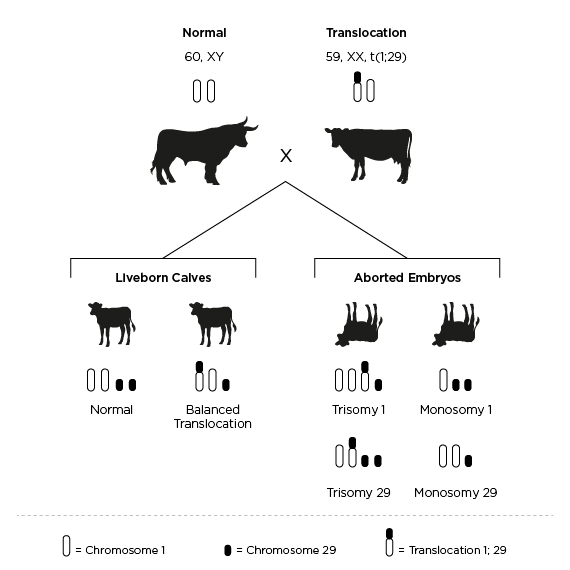
Because many of the resultant embryos have an uneven chromosome number and are unbalanced, they usually die; so RT causes a significant decrease in fertility in 59 karyotype animals. This decreased fertility is seen in both male carriers, where the semen usually appears normal but has a decreased conception rate, and female carriers which have a normal conception but their embryos fail to develop and survive. Embryo transfer is unrewarding in affected cattle.
It is likely that a 58 mated to another 58 or to a 60 will have normal fertility at those matings. But when a 58 is mated to a 60, the next generation being all 59s, will all have decreased fertility when they are subsequently mated.
RT does not alter the number or actions of the genes, it just alters their position. Therefore carriers of such translocations usually look perfectly normal.
RTs do not always kill the embryos and some affected calves may be born which are slow, stunted and usually die young. (One of the causes of Down’s Syndrome in man is a Robertsonian Translocation).
In major breeds the decreased fertility from RT is reported to be of the order of 5-10% in most fertility traits but this can vary widely. In a minor breed like the British White, fertility of RT carriers may be 30% lower than normal for the cattle industry.
The 59s will have decreased fertility but in most cases will eventually get in calf. Under a seasonal mating system (where the bull is pulled out after a defined mating season eg of 60 days) the 58s and 60s should have a calf every year, but the 59s would probably only get in calf every second or third year. In an all-year-round mating system (where the bull is left in the herd continuously) the 59s would be slow to get in calf but should eventually calve. They could have an inter-calving interval of 400-500 days compared to the ideal of 365 days in a seasonal herd. This may be what most UK (and American) studs do and so the infertility is less likely to be noticed or even to be of a concern. Note that the 59 karyotype cows will look better and grow better because they have less pregnancies; but their contribution to herd performance will be below par.
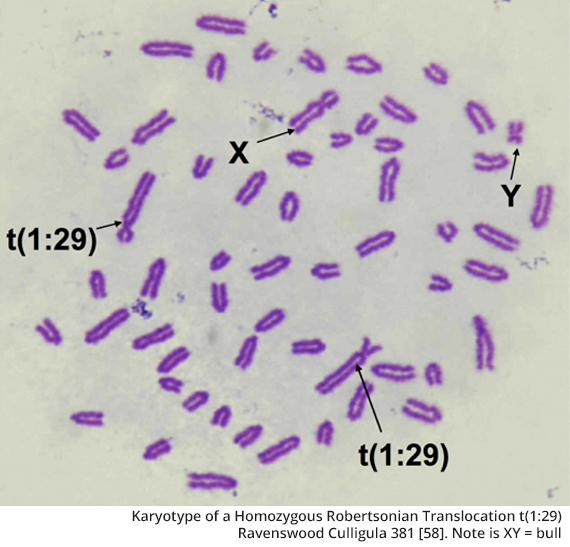 Carriers of RT can be identified by karyotyping, the analysis of chromosomes derived from white cells, in blood submitted to a Cytogenetic Laboratory. In Australia this can be done through CytoLabs of Western Australia. Current laboratory charges are approximately $150 per animal tested.
Carriers of RT can be identified by karyotyping, the analysis of chromosomes derived from white cells, in blood submitted to a Cytogenetic Laboratory. In Australia this can be done through CytoLabs of Western Australia. Current laboratory charges are approximately $150 per animal tested.
Some of the British White sires imported into Australia were either 58 or 59 karyotypes. The British White Cattle Society of Australia commenced actively karyotyping and culling in an eradication scheme in 2008. Now only 60 karyotype bulls can be registered. This is rapidly reducing the prevalence of RT in the breed.
All homozygous carrier females (58s) should then be culled as soon as possible. [Note that a normal bull (60) when used over a heterozygous (59) cow will leave half the progeny free of the trait and the other half will be heterozygous (59) carriers, but all the progeny of a homozygous (58) carrier of either sex will also be carriers of the trait (obligate carriers)].
Culling of carriers has successfully reduced RT down to insignificant levels in some breeds world-wide and the Australian British Whites are making significant progress now as well.
